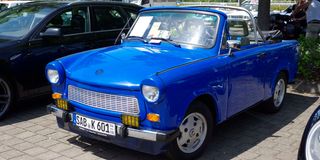Premium
No, idling is not the best way to warm a car engine

An idling engine uses fuel approximately about a litre every 20 minutes and gets you nowhere.
Dear Gavin,
Growing up, I watched my father switch on the engine and allow the family car to idle for about 15 minutes before driving. I too do the same, but a friend told me that it is unnecessary. What’s your expert opinion?
Abdullahi
There is no benefit to idling an engine. With a few possible exceptions like when the car is in a workshop, the only reason to start the engine is to move the vehicle, so as soon as you start it, move it! And if you can’t move promptly, don’t start. This is kinder to a cold engine and is a more efficient use of fuel in a warm one.
An idling engine uses fuel approximately about a litre every 20 minutes) and gets you nowhere, which is both a waste of money and a cause of avoidable pollution. This is such a big deal when applied to hundreds of millions of vehicles that manufacturers are increasingly fitting systems that turn the engine off when you stop at, say, traffic lights, and automatically restart it when you press the accelerator again. That does mean more frequent work for the battery and the starter motor, but the pros outweigh the cons if the starter is functioning properly.
It is true that when the oil is cold lubrication efficiency is lower and thus wear is higher, especially in the first few seconds, and the balance is progressively reversed as the engine reaches normal operating temperature. To speed up the warming process, there is even a thermostat that effectively turns off the cooling system until the right temperature is reached.
But the notion that you should “warm up” your engine at idle after first starting in the morning is a myth – not just unnecessary but actually negative to the engine and your pocket. Certainly, you should avoid harsh driving (high revs and work load) until a “cold” engine (when the lubrication will be sluggish and incomplete) has reached its normal operating temperature (and the oil is spread and is at its most efficient). But driving the car gently warms up the oil much faster than standing still at idle. Idling only extends the initial high-wear period.
Searching for the ‘perfect’ car is mission impossible, so here’s the guideline you should use…

Whether you’re buying a new or used car, the key is to forget likes and dislikes and focus on what the car “must” do.
I recently got paid after concluding a project I have been working on for two months. I drive a secondhand Mazda Demio, which is also my first car. I’d like to reward myself by upgrading to a better car. In a nutshell, I’m searching for the perfect car that does all a car is supposed to do with style and economy.
Faith
We all want a car that looks good, runs perfectly, is cheap to buy and run, and yet has comfort, high status, elegant style, lots of power, and an ability to nip around town or cruise down the highway, to go off-road sometimes, and which will make sense when we’re travelling light and alone, or take five passengers and half-a-tonne of luggage. It should also have spares and service at a reasonable price, be economical to run, reliable, and hold a good resale value.
We also know without being told that no such vehicle exists. There are some cars that tick all the quality and performance boxes (think 4WD Rolls Royce Sport). But not only is the purchase price astronomical, the service and parts costs of a car like that are eye-watering, and anyone who can afford those doesn’t buy a used car. This means that the rate of resale depreciation on a car costing tens of millions of shillings is phenomenal.
In the real world, we must sort out certain priorities and compromise. The first question is, what is your budget? The higher that is, the fewer qualities you will have to sacrifice and the wider choice you will have. On a lower budget, the choice goes down, the problems go up, and the compromise vice tightens.
Whether you’re buying new or used, the key is to forget likes and dislikes and focus on what the car “must” do. Without compromise. “Must” means an essential quality that is required often. Will the car’s main use be in town or over long distances, on tarmac or off-road? Must it carry lots of passengers and luggage or will it usually travel light. Is speed and comfort important, or is fuel economy a higher priority? Does the image of the car matter?
The answer to those questions will define the class of car you “need”. For example, if it must be able to carry six people and half-a-tonne of luggage, you can rule out exceptional running economy or nip-and-zip around town. If it must be able to go on bad roads, or even off-road, you can rule out sports cars and luxury limousines and at the same time bid farewell to either grand-prix performance or sumptuous luxury. And so on.
For example, if you always go on a family holiday to the coast once a year, and otherwise use the car for commuting to the office, it is irrational to compromise your commuting efficiency just to ensure your passengers and luggage fit easily on that one holiday trip. It might be worth finding some other way to solve the one-off problem, like adding a trailer or sending some of the family by train. It will be much cheaper in the long run.
It is not difficult to sort out these “musts” accurately, if you start with an open mind. But most of us have difficulty getting rid of preconceptions and prejudices, especially when it comes to cars. We have largely decided what we need or want before really analysing the choice objectively. Happily, the objective analysis doesn’t lock you into a specific choice. It merely gives you a perspective on your final decision - is what I am doing strictly practical and optimally efficient, or does it include elements of indulgence? That, too, is your choice. And if you mislead yourself, there’s only one person you will be fooling.
If you can afford it, buy the car you want, that also meets your needs. Don’t take life too seriously; it’s not permanent.
The ups and downs of two-stroke engines
Gavin,
Why are 2-stroke engines so dominant in small machines like motorcycles and chainsaws, but 4-stroke engines are almost universal in cars? Do 2-strokes have a size limit or what other factors determine the better source of power? Wilfred.

Saab 90.
Two-stroke engines are smaller, lighter and cheaper to make and deliver more horsepower power per cc, and can operate at extreme angles (even up-side down). But they are also noisier, deliver power in a narrower rev band, are prone to emitting more toxic exhaust fumes and wear out faster – and the bigger and more powerful they are, the faster that wear can be. They are also intrinsically less fuel efficient for some very techy reasons.
The greatest advantage of two-stroke engines is their small size and light weight, so they are especially suitable where weight is most critical – on small machines, often hand-held and frequently operated at extreme angles from the horizontal. Four-strokes need gravity to be working in roughly the right direction so oil drains back into the sump, but they deliver power over a wider rev band (fewer gear changes), have more torque power, and can last a lot longer (especially the piston rings). In addition to these more appropriate characteristics for larger motor vehicles, four-strokes are better able to comply with increasingly stringent exhaust emission regulations.

Trabant 601
While both types of engine can be designed to do the job on either small machines or heavier cars, the balance of pros and cons polarises most manufacturing choices. The pistons of four-stroke engines move up and down four times (separate movements for induction, compression, power, exhaust), so they each deliver one power stroke per two rotations of the crankshaft. Two-stroke engines combine those processes into just two movements, by having their inlet and exhaust valves in the cylinder walls, so each piston delivers a power stroke twice as often - on every rotation of the crankshaft. In years gone by, two-stroke engines have been used on cars – some very successfully. Older readers may remember the Saab 90s of Erik Carlsson and Stirling Moss’s sister, Pat, which were serious contenders in the Safari Rally more than 40 years ago...with two-stroke engines of just 900 cc against rivals with 4-stroke engines of 2 and 3 litres or more.
In the same era, small two-stroke DKW/Auto Union saloons were numerous on our roads. More recently, the first Suzuki LJ50 4WDs (1980s) had two-stroke engines of just 500 cc and were remarkably capable and successful.
There have been numerous other examples in the rest of the world, perhaps most notoriously the Russian-made Trabant.
There were millions of them, mainly because, for decades, it was the only small vehicle available in a closed market. There was a three-year waiting list! It was crudely made but innovative.

Suzuki Lj
It was also famously smelly, smoky and oily, but not because of a design fault…it was because getting one was so difficult that owners added extra oil to the fuel in hopes it would make their engines last longer.
Typically, two-strokes do not have a separate oil sump for engine lubrication. Instead, oil is added to the fuel in a mixture of about 32:1. Russian motorists greatly enriched that.
To a lesser extent, so do some makers of strimmers, lawn-mowers, chainsaws and even small motorbikes which get noticeably oily around the gills.
In two-strokes, too little oil in the fuel causes overheating and severe wear. Too much generates clouds of grey exhaust smoke and a tendency to foul the spark plugs. My Suzuki LJ50 in the 1980s had a separate pot for the 2T oil, and mixed it automatically as the vehicle was running.
Oily plugs and loss of power were a frequent issue. I removed the pot and poured the right amount of oil directly into the petrol tank and had no further trouble…and no thick smoke.
Overall, the car was small, slow and bouncy, but capable enough to drive off-road over the top of mountains, ford deep rivers and pull numerous vehicles out of trouble in the mud, often because bigger 4WDs sank and the LJ50 didn’t.





